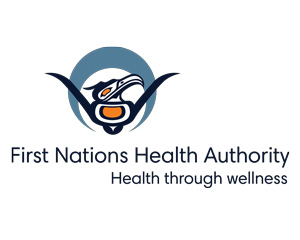FNHA recognizes that many First Nations in BC use a variety of cannabis products for a number of reasons, both medical and non-medical. Harm reduction is central to FNHA's approach to the legalization of these additional cannabis products.
“We are focused on protecting and promoting health and wellness, while reducing the negative health effects that can be associated with cannabis use," says Dr. Evan Adams, FNHA's Chief Medical Officer. “We will continue to communicate the latest evidence, supports and resources, as well as further our engagement and conversations with First Nations communities in BC."
The new federal regulations allow authorized distributors and retailers to sell three new classes of cannabis products. These new cannabis products will be available online and in stores:
• Edibles (candy, baked goods)
• Cannabis extracts (ingested and inhaled concentrates)
• Cannabis 'topicals' (ointments, oils, makeup)
Cannabis-infused alcoholic beverages and cannabis products containing tobacco, nicotine or caffeine are still illegal. Food containing cannabis is not allowed to be sold in restaurants.
Safer Consumption of Edibles
To be on the safe side, start low and go slow. Some cannabis products may have a stronger effect than you were expecting, so be aware of the potency of the cannabis you are ingesting. You may get much higher for much longer than you wanted to. To prevent this, consume a small amount and wait at least one hour to feel the effects before using more. Feeling the effects of edibles takes longer than for smoking cannabis, and it is not uncommon for people to consume too many edibles in a short amount of time and have a negative experience.
Store Cannabis Products Safely
Cannabis can harm your child's health, so keeping cannabis products away from your child is important. Cannabis products like cookies, gummy bears, brownies, lollipops and shakes can look like candy or a treat to a child.
Ideally, store cannabis products in child-resistant packaging and in a locked area. Make sure your child cannot see or reach the locked area. Remember that children are excellent climbers so putting cannabis up high on a shelf does not necessarily mean it's safe or out of reach! Little ones may see it as a fun challenge so it is important to make sure they cannot get to it.
It's also critical to be careful with edibles around Elders, as they may not be familiar with cannabis products and ingest them accidentally.
Packaging and Labelling
There will be strict rules on packaging and labelling to prevent companies from making cannabis products attractive to youth. All packaging and labelling must have a clear cannabis symbol, a health warning listing the product's tetrahydrocannabinol (THC) and cannabidiol (CBD) content, limited use of logos and colours, and child-resistant packaging.
THC Maximums
Edible cannabis products can have a maximum of 10 mg of THC, the psychoactive component of cannabis, per package. Beverages have the same maximum, meaning a six-pack must contain less than 1.7 mg of THC per can or bottle. The aim of these maximums is to reduce accidental overconsumption and the incidents of adverse effects and hospitalization.
Resources
Review Health Canada's official regulations here: https://www.canada.ca/content/dam/themes/health/campaigns/cannabis/media-kit/Final%20Regulations%20-%20R%C3%A8glements%20finaux.pdf

